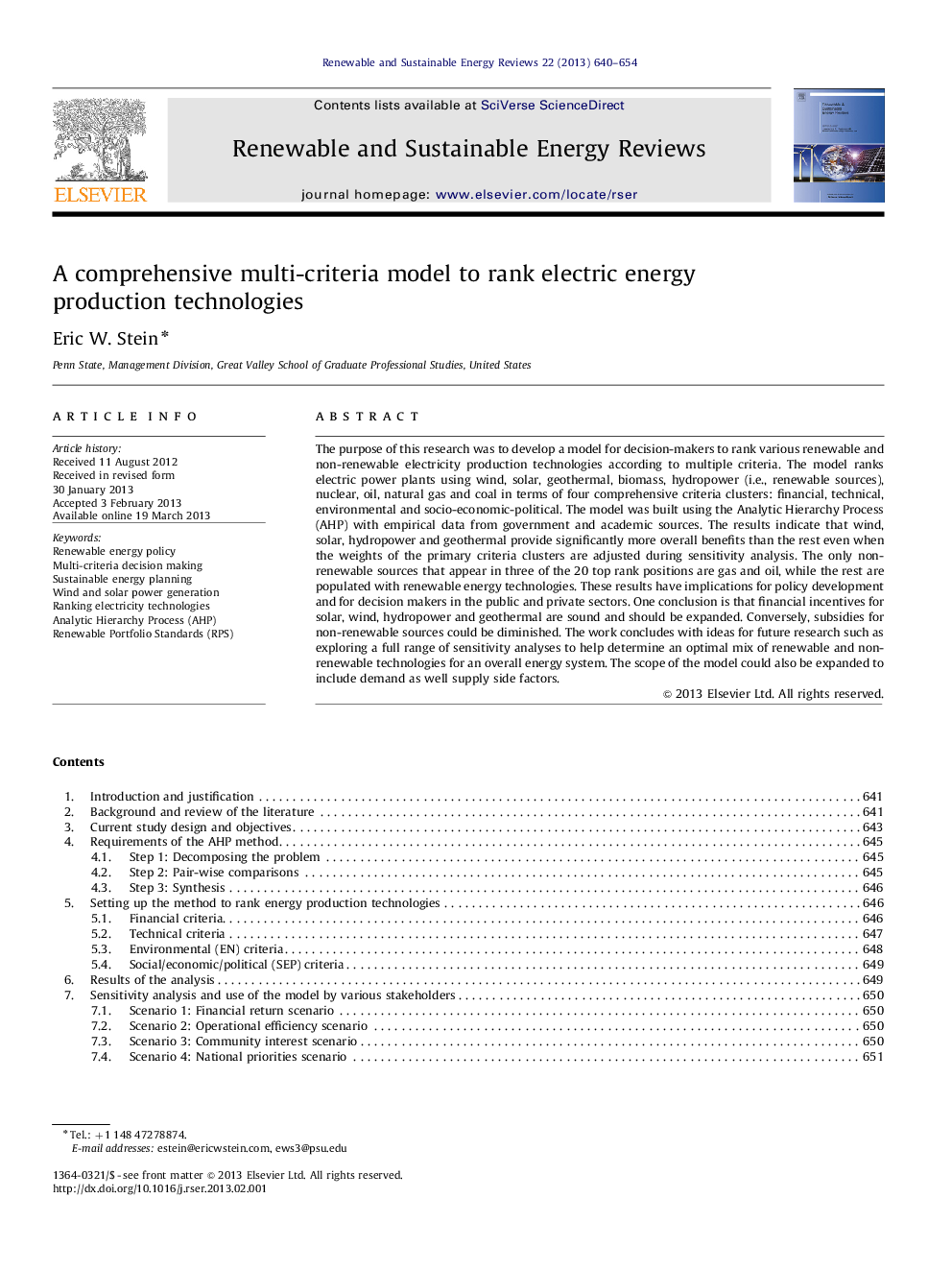| Article ID | Journal | Published Year | Pages | File Type |
|---|---|---|---|---|
| 8122313 | Renewable and Sustainable Energy Reviews | 2013 | 15 Pages |
Abstract
The purpose of this research was to develop a model for decision-makers to rank various renewable and non-renewable electricity production technologies according to multiple criteria. The model ranks electric power plants using wind, solar, geothermal, biomass, hydropower (i.e., renewable sources), nuclear, oil, natural gas and coal in terms of four comprehensive criteria clusters: financial, technical, environmental and socio-economic-political. The model was built using the Analytic Hierarchy Process (AHP) with empirical data from government and academic sources. The results indicate that wind, solar, hydropower and geothermal provide significantly more overall benefits than the rest even when the weights of the primary criteria clusters are adjusted during sensitivity analysis. The only non-renewable sources that appear in three of the 20 top rank positions are gas and oil, while the rest are populated with renewable energy technologies. These results have implications for policy development and for decision makers in the public and private sectors. One conclusion is that financial incentives for solar, wind, hydropower and geothermal are sound and should be expanded. Conversely, subsidies for non-renewable sources could be diminished. The work concludes with ideas for future research such as exploring a full range of sensitivity analyses to help determine an optimal mix of renewable and non-renewable technologies for an overall energy system. The scope of the model could also be expanded to include demand as well supply side factors.
Keywords
Related Topics
Physical Sciences and Engineering
Energy
Renewable Energy, Sustainability and the Environment
Authors
Eric W. Stein,
